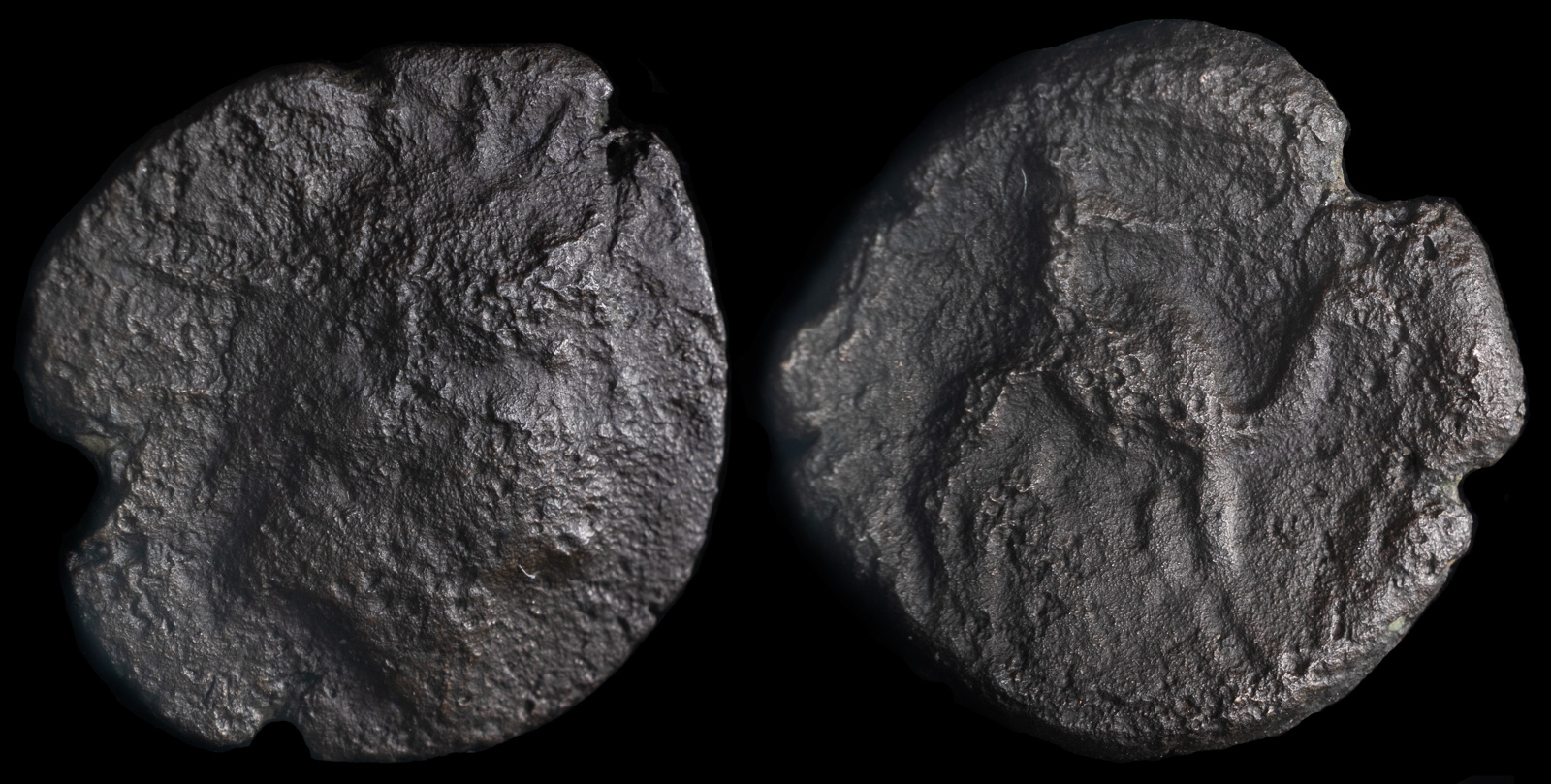
Mesopotamia, Adiabene Natounia
circa 125-75 BCE
Æ 21 mm, 4,08 g
Radiate and diademed male head (Helios-Shamash?) to right.
Rev. Rider on camelback to right, holding a short staff in his right hand; all within wreath border.
CSE II 846. Hoover, Natounia Series 1, 1-7. Seyrig, Trésor 13a
Adiabene was an obscure kingdom in now-Kurdistan that rose up as Seleukid influence in the area waned. Before this coin was minted, it was conquered by the Parthians, but seemed to have some nominal independence within their empire. Interestingly, one of their queens – Helena – converted to Judaism in the 1st century CE. In general, the kingdom was multicultural and numerous religions were tolerated.
This coin comes from an earlier time and may have been minted during the time of King Natounnisar, who founded the city of Natounissarokerta, or Natounia for short. The handful of legible coins have the city’s full name. That being said, mine is in typical condition for the type. Most of these were overstruck on types of Antiochos VII, though it’s hard to tell (for me at least) whether mine also was.
A few years ago, the city made world headlines when archeologists believed they had located it as the Rabana-Merquly fortress. Rock carvings of an elaborate ruler indicated that there was a royal purpose for the city. As lead researcher Michael Brown said:
“Rabana-Merquly is … the largest and most impressive site of the Parthian era in the region, and the only one with royal iconography, so it’s by far the best candidate.”
The location is so forbidding, literally on top of a mountain, that initial research was only possible with drones. More recently, archeologists have managed to visit the site itself and document it. The news hit major media markets and even CNN covered it.
Coins of Natounia are very rare. Some of the articles I read mentioned only seven known coins, but ACSearch lists fifteen sales since 2010.
Rabana-Merquly is located in the Kurdistan province of Iraq. This part is actually far more peaceful than the rest of the country and it is possible to tour. However, I have yet to succeed in convincing my wife that this is the case, so I suspect it will be some time before I’m able to provide my own photos. In the meantime, I have this nice coin.
I also noticed that this is my first ancient coin with a camel. I don’t intentionally collect different animals, but it is neat to finally have one.
Relevant Resources
141 BCE
Adiabene conquered by the Parthian king Mithridates I.
King from Adiabene participated in the Battle of Tigranocerta on the side of Tigranes the Great.
The Battle of Carrhae, in which the Parthians defeated the Romans. solidifies Parthian influence in Mesopatamia, including Adiabene.
36 CE
Queen Helena and her son Monobaz of Adiabene convert to Judaism.
48 CE
Queen Helena and King Izates of Adiabene send aid to Jerusalem, as noted by the Talmud and Josephus Flavius.
59 CE
Izates bar Monobaz dies, and his brother Monobaz II becomes the king of Adiabene.
During Emperor Trajan‘s Parthian campaign, Adiabene is briefly occupied by Roman forces as part of their conquest of Mesopotamia.
The Sasanian Empire, led by Ardashir I, defeats the Parthian Empire. Adiabene becomes part of the Sasanian Empire, losing its autonomy as a client state.
October 1
Galerius takes Nisibis after advancing through Medea and Adiabene.